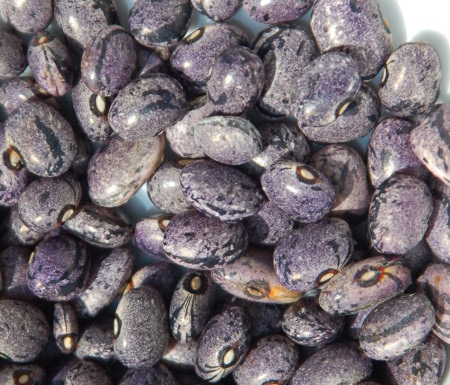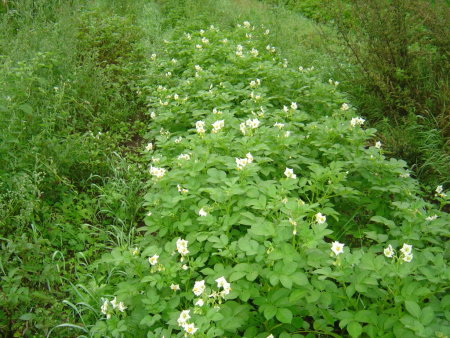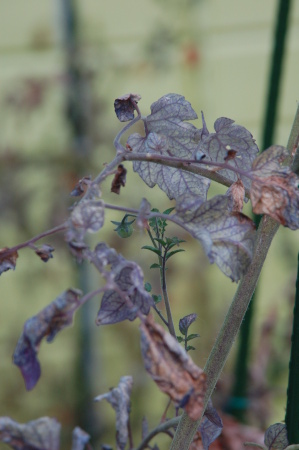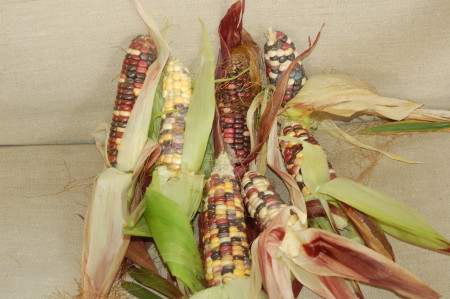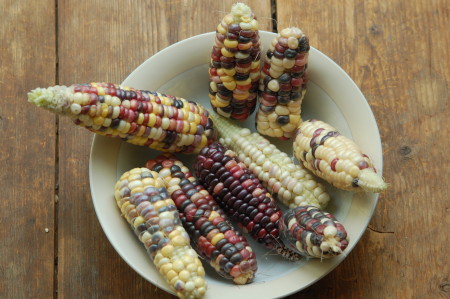
Perhaps I should call these Kumato raisin tomatoes! This is a picture about a week after harvest. Do you notice how the skin is shrivelling up on some of them?
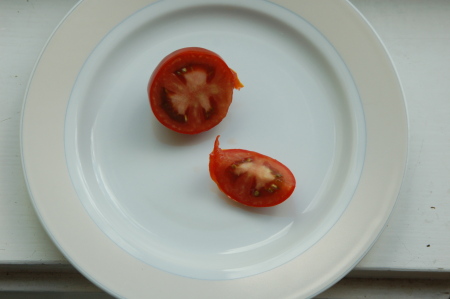
Here’s what the inside looks like of one of the healthier looking ones above. This is three-quarters of a tomato, after a fourth of it was sacrificed for a taste test. Notice how the skin tore a bit instead of cutting, because it was so tough? All I can say is wow, YUCK! A sort of stick to the roof of your mouth, pasty taste. What a lingering after-taste! Nothing I would wish on anyone else.
Okay, by now you are all probably wondering what I am getting on about here.
The Kumato® is a variety patented by Syngenta. According to their website, this variety is created entirely with traditional breeding methods. As they explain on their website, they never sell anything but the final product to consumers, and only grown by specially licensed farmers and sold through specially licensed sales outlets (in other words, only very large supermarket chains). If you don’t buy it from an authorised vendor, it’s not a real Kumato!
So if the seeds are so controlled, how did I get the seeds to grow this in my garden? The answer is that it seems to be an open pollinated variety, and when you save seeds from the tomatoes and regrow them, they appear to grow true to type. I got these seeds from Laura of Mas du Diable, and I think she told me her father was the original saver of the seeds and gave them to her.
Syngenta does not actually sell this tomato in the Netherlands, so I couldn’t save them myself.
So what’s up with these tomatoes?
Well seed companies lose money when people save and replant their own seeds, and this is often dealt with by means of F1 hybrid varieties, which don’t grow true to type when grown from saved seeds. It appears in this case Syngenta has breed their tomatoes to be so totally dependent on chemicals, that anyone who does not know their secret formula of agricultural poisons cannot exactly reproduce the tomato sold in stores.
When I grew it, it was very weak and attracted every disease I normally get in my tomatoes. I grew it in a container, and noticed the roots did something strange to the dirt to make the water flow through quicker and not be well retained. The plants were not very productive for me either.
Why was it created?
Well first, here in Europe we have seed laws that restrict the varieties allowed to be sold. Many people in Europe have never seen a tomato that isn’t red! This is a ‘black’ tomato (also called purple), and it’s a real oddity. In addition, there’s probably some marketing advantage for Syngenta to be able to say it’s an open pollinated variety, and especially many gardeners are shunning F1 varieties by now in Europe.
Personally, I’m going back to growing heirloom tomatoes!
—
Here are some pictures from Rich L. See comments below. Click on images to see full sized.





